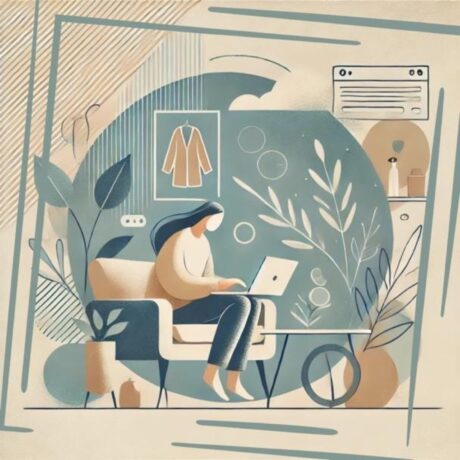The Future of Denim, Part #4: The democracy of denim
“The American dream is a crock. Stop wanting everything. Everyone should wear jeans and have three T-shirts, eat rice and beans”. Comedian Bill Hicks’ prescient remark may have captured the zeitgeist today as slow fashion picks up the pace.
Denim is loved across ages, genders, countries and styles and few items of clothing smash social barriers better than a faithful pair of jeans. It’s the undisputed champion of garments with workwear, revolution and social values woven into its identity. The demand and the market for denim are not going anywhere.
Rosey Cortazzi, former vice-president of womenswear at Levi’s and now global marketing director for Turkish denim supplier Isko, which works with Topman, Diesel and Guess says “we’re extremely optimistic about the health of the denim market and have expanded our capacity to meet increased demand […] We’ve upped our number of looms from 1,700 to 2,000, and increased our annual production capacity from 250 million metres annually to 350 million metres.”
Looking forwards, as the market expands it’s imperative that the practices change at an even faster rate. But a commitment to sustainability means a commitment to worker welfare as well as the environment. As a clothing sector defined by authenticity and heritage, the denim industry would be the first to be called out for overlooking this responsibility.
Fashion Revolution Week is a week of campaigns and action to demand greater transparency in the fashion supply chain. Taking place during the week of 24 April, the date of the Rana Plaza building collapse, in Dhaka, Bangladesh, it’s the industry’s voice on redefining how we think about clothes.
Dutch denim brand MUD Jeans, known for allowing consumers to lease jeans rather than own them, headed to Tunisia in April to document how it manufactures new jeans from recycled fabrics. CEO Bert van Son said “we think it’s really important that people realize that their products are made by people, not machines. We hope that they then start to realize the value of a product. For us it’s essential that the people who make our jeans live a good life, are happy. That’s why we will go there ourselves and chat with them to find out what makes them happy.”
Eva Engelen, responsible for CSR at MUD jeans told me, “We’re consciously producing our fabrics in Spain and our jeans in Tunisia. We have chosen these production partners as we share the same philosophy towards both social and environmental sustainability. Keeping our Supply Chain simple and close to home allows us to develop a long term relationship with our suppliers and ensure better labour conditions at the factories. It also allows us to save resources at production level. At the jeans factory in Tunisia for example, 95% of the production water is recycled, the additional 5% evaporates and is filled up with rainwater.”
Levi’s, a brand founded on its social principles and work ethic of its original customers, is similarly dedicated to worker wellbeing. As brand consultant Emma Mainoo says, “For those simply painting their storefronts with rainbows, they might look to Levi’s, which has been supporting equal rights within its workforce since the 1970s and 1980s.”
Their Worker Well-Being Initiative goes beyond protecting the rights of the people who make the products, investing in them to help improve their lives beyond factory walls. The all American brand partnered with suppliers and local non-profits to help meet each worker’s specific needs, such as health education, family welfare programmes and financial empowerment.
The programme benefits nearly 100,000 workers in 12 countries. By 2020, 80% of all Levi’s products will be made in factories that support Worker Well-Being, benefiting at least 200,000 workers. By 2025, Levi’s plan to increase that number to 300,000. It’s an incredible example of the impact which global brands can have on sustainable development goals.
A 166-year history is testament in itself to success, but the last few years have been particularly important for Levi’s, as it’s tapped into its heritage and adapted to reflect values of product innovation, pioneering sustainable practices and political engagement before launching on the stock market.
For me, the social substance of its denim jeans is one of its greatest charms and a key part of the romance of Levi’s heritage story, which it continues to balance with innovation, evolution and customer connections.
It was the father of jeans as fashion rather than workwear, Giorgio Armani, who said that “jeans represent democracy in fashion” and he was right. Sustainable fashion is the story of democracy communicated through clothing and denim has the opportunity to lead this conversation, include and support stakeholders at every level and act as a signifier of social change for both industry and culture.
As we consider denim’s role with fashion industry’s environmental more broadly, it’s worth returning to the central question of circularity and how this ultimately reflects what the industry is striving for. It’s not only a question of using less water, producing less waste and adopting innovative pattern cutting techniques, but a case of observing the three ‘R’s – re-use, re-pair, re-cycle. The future of denim looks set to be shaped by society and crafted by culture as it ever was in 1873. And an awoke society demands dependable denim brands with authentic values. To refer back to Joel Makower’s analogy (in Part 2) comparing the fashion industry’s poor efforts in sustainability to teen sex – Sustainability is like teen sex. Everybody talks about it. Nobody does it very much. And when they do it, they don’t do it very well – maybe, just maybe, the denim industry, so loved for its heritage spirit and vintage values, has come of age and – with the wisdom afforded by age – is doing sustainability rather well?








